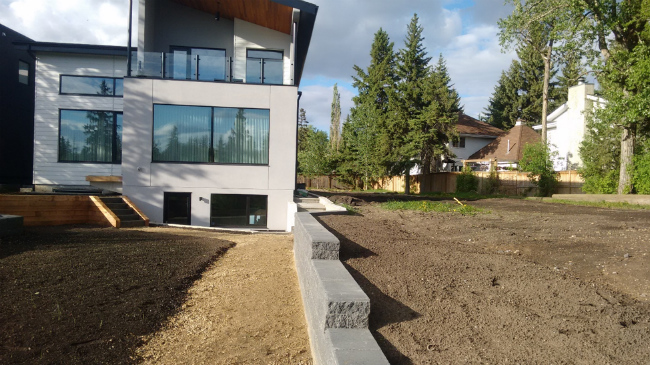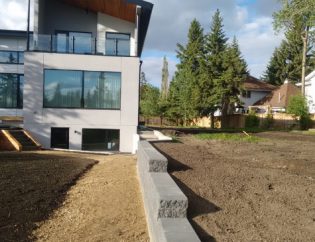
Lot Grading can be considered as one of the very important components of construction. The main purpose of lot grading is to ensure better drainage around the properties so that the owners of these surrounding properties are all benefitted from this.
Lot grading can be of two types:
- Rough Grade includes grading the clay on the lot in accordance with the design of the approved Lot Grading Plan for residential property.
- Final Grade includes grading the topsoil and completing landscaping on the lot in accordance with the design of the approved Lot Grading Plan for residential property.
What is Lot Grading Certificate?
A lot grading certificate is a document prepared by certified professionals, accepted by the regulatory authority, which illustrates all the required grade elevations with reference to the approved lot grading plan.
As per City of Edmonton, all developments including infill housing requires a Lot grading certificate to be submitted to ensure that the grading of a property conforms to the requirements of the Drainage Bylaw 18093 and the lot grading guidelines.
Based on two types of Lot Grading, Lot grading certificates can be of two types as well:
- Rough Grade Certificate records all the as-built elevations on clay of the lot that is required for drainage approval. As per City of Edmonton drainage bylaws, as-built elevations on clay must be within 7-20 cm lower than the design values provided in the approved Lot Grading Plan for residential property.
- Final Grade Certificate records all the as-built elevations on the topsoil and completing landscaping on the lot for drainage approval. As per City of Edmonton drainage bylaws, as-built elevations on completed landscape must be within 10cm above or below the design values provided in the approved Lot Grading Plan for residential property.
What if Lot Grading Certificate is Rejected?
Lot Grading Certificates can get rejected for a number of reasons due to the presence of errors or incomplete information. Following are few to state:
- Error in property information, building layout, lot shape and client information
- Invalid design and existing elevations
- Unsigned or unstamped drawings
- Missing north directional arrow, structures on the lot, existing surface condition
- Missing scale drawing information and/or reference to metric geodetic datum
- Existing elevations are not within tolerances
- Discrepancies or errors in design and/or existing elevations that require confirmation
- Red-line revisions to Lot Grading Plan that are not reflected on the Lot Grading Certificate
- Incomplete information for any easement agreement, utility right-of-way and areas covered by a caveat or restrictive covenant
- Poor or unclear Lot Grading Certificate
Now when a Lot grading Certificate is rejected, the grading inspector sends back a report to the applicant and the issuing organization stating the reason for disapproval. This report also provides a deadline for the property owner within which to re-submit the certificate for approval.
After receiving this report, the applicant, either owner or landscaper, must consult with the issuing organizations and take necessary measures to rectify and make changes to Lot grading Certificate with revised elevations and hence re-submit the certificate to the regulatory authority for approval.


